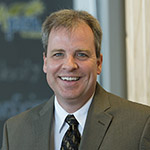
It was big news this week when Nature published the discovery of a new antibiotic, teixobactin. Teixobactin, which kills bacteria by a different pathway than other antibiotics, represented the first new class of antibiotics to be discovered in 30 years. Not only did the Northeastern University scientists who discovered the drug say it was “exceptionally well-protected from resistance development,” it also, remarkably, was grown in the dirt, not on a culture plate.
“A key innovation was the use of outdoor soil itself as an incubator to culture organisms that cannot be propagated by artificial laboratory conditions,” said Michael S. Kinch, PhD, associate vice chancellor and director of the Center for Research Innovation in Business at Washington University in St. Louis, who has written extensively about the pharmaceutical industry and the dearth of new antibiotics.
One of the little known secrets of the laboratory is that only one in 100 bacterial strains will actually grow in the lab. Kinch says the new method for finding new antibiotics is even more exciting than the discovery of teixobactin, and likely to have a bigger payoff in the end.
“The novel process reported in the Nature paper is particularly elegant by blending common sense and innovation,” Kinch said. “The great majority of bacteria on the planet have yet to be described, in part because they cannot be cultured in the laboratory. Scientists at Northeastern University developed a way to isolate and grow individual bacteria quite literally in their own back yard (as the devices were buried in the yards of some of the investigators). This same methodology could revolutionize the discovery of new medicines well beyond anti-bacterial agents.”
Kinch believes the concept of modeling a “real-world” environment could foster fundamental discoveries that impact other fields.
“For example, a human cancer does not cause disease when grown in current laboratory conditions (such as two-dimensional plastic or three-dimensional gelatinous mixtures), but rather in a living, breathing person,” he said.
“Thus, the findings published this week could serve as a springboard for all scientists and physicians to thoughtfully re-consider how they design and interpret their work. The ultimate benefits for improving patient care could be extraordinary.”